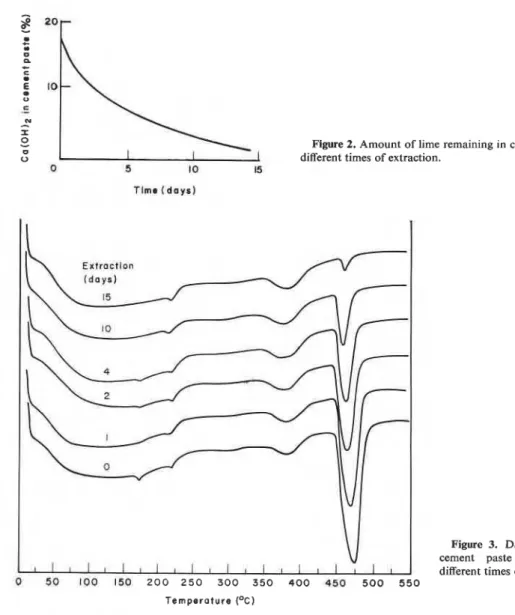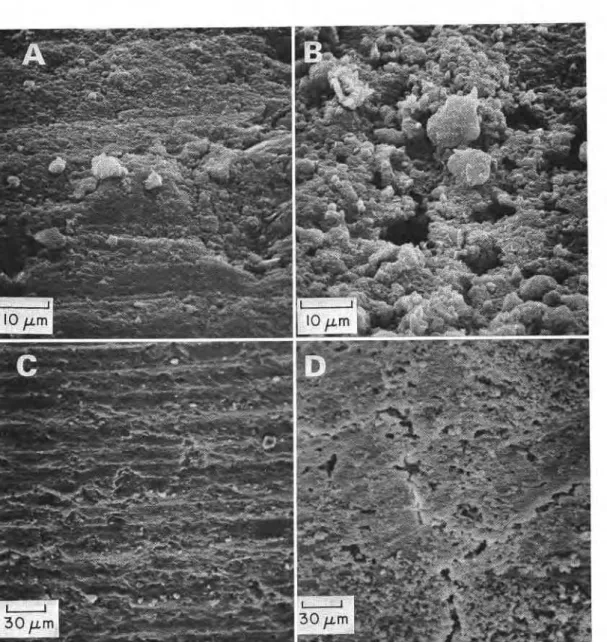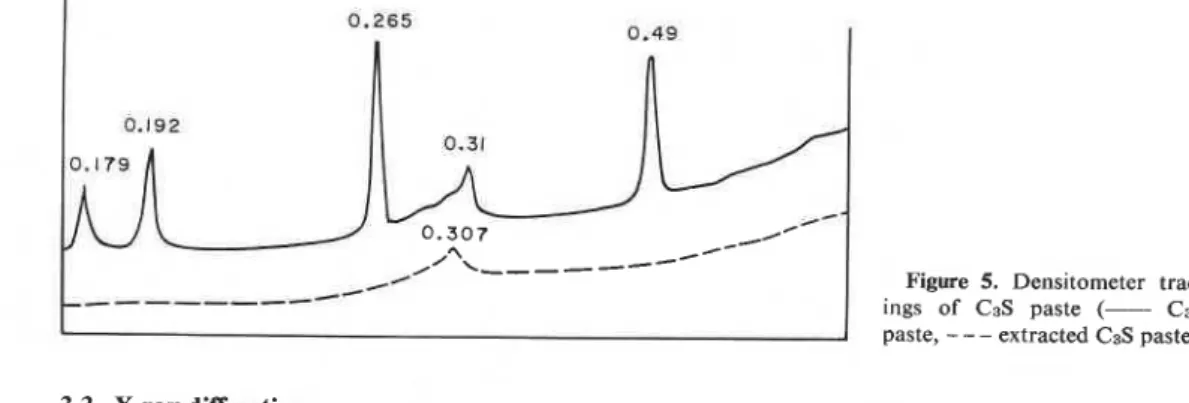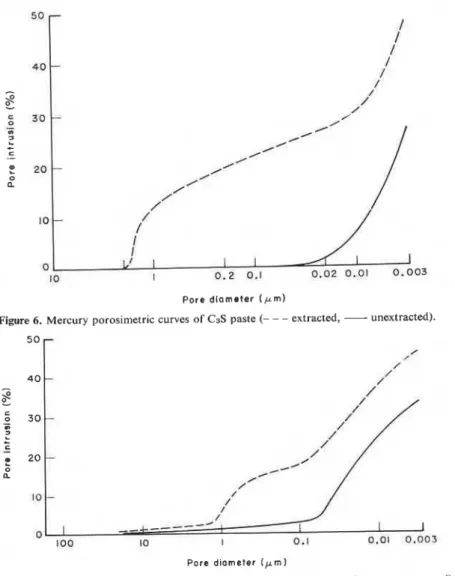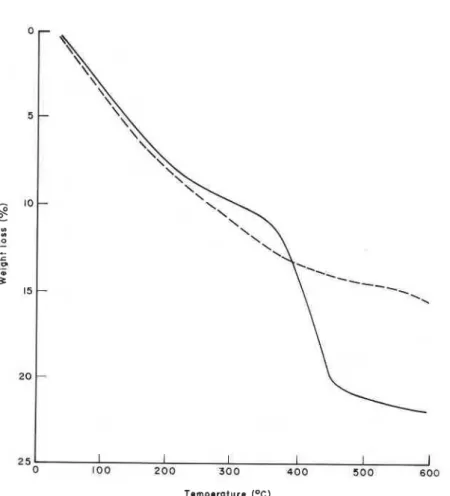Publisher’s version / Version de l'éditeur:
Journal of Chemical Technology and Biotechnology, 32, pp. 946-952, 1982
READ THESE TERMS AND CONDITIONS CAREFULLY BEFORE USING THIS WEBSITE. https://nrc-publications.canada.ca/eng/copyright
Vous avez des questions? Nous pouvons vous aider. Pour communiquer directement avec un auteur, consultez la première page de la revue dans laquelle son article a été publié afin de trouver ses coordonnées. Si vous n’arrivez pas à les repérer, communiquez avec nous à PublicationsArchive-ArchivesPublications@nrc-cnrc.gc.ca.
Questions? Contact the NRC Publications Archive team at
PublicationsArchive-ArchivesPublications@nrc-cnrc.gc.ca. If you wish to email the authors directly, please see the first page of the publication for their contact information.
NRC Publications Archive
Archives des publications du CNRC
This publication could be one of several versions: author’s original, accepted manuscript or the publisher’s version. / La version de cette publication peut être l’une des suivantes : la version prépublication de l’auteur, la version acceptée du manuscrit ou la version de l’éditeur.
Access and use of this website and the material on it are subject to the Terms and Conditions set forth at
Extraction of CaOH2 from portland cement and 3CaOSiO2 pastes
Ramachandran, V. S.; Polomark, G. M.
https://publications-cnrc.canada.ca/fra/droits
L’accès à ce site Web et l’utilisation de son contenu sont assujettis aux conditions présentées dans le site LISEZ CES CONDITIONS ATTENTIVEMENT AVANT D’UTILISER CE SITE WEB.
NRC Publications Record / Notice d'Archives des publications de CNRC:
https://nrc-publications.canada.ca/eng/view/object/?id=9273fe5c-80b3-4be1-8e99-ce3985466beb
https://publications-cnrc.canada.ca/fra/voir/objet/?id=9273fe5c-80b3-4be1-8e99-ce3985466beb
r
41
01 h L Y
" 5 6 c 3
/ National Research Conseil national
I
I
$
Council Canada de recherches Canadah
EXTRACTION OF Ca(OH)2 FROM PORTLAND CEMENT AND 3Ca0.Si02 PASTES
by V.S. Ramachandran and G.M. Polomark
ANALYZED
Reprinted from
Journal of Chemical Technology & Biotechnology Vol. 32, p. 946
-
952Price $1.00 OTTAWA NRCC 21200
DBR Paper No. 1095 Division of Building Research
.
N R C-
C I S T IBLDG.
RES.
L I B R A R Y
I
flJ" 05-
1
8
BIBLIOTH@QUE
I
Rwh.
BStim.
PI.. 2 . .-
SOMMAIRF,
On d e c r i t un procM6 pour e x t r a i r e l a cbaux l i b r e des p a t e s matures de ciraent p o r t l a n d e t de s i l i c a t e de t r i c a l c i u m . Cela exige l ' e x p o s i t i o n de minces disques de p a t e
a
une s o l u t i o n aqueuse de Ca(OU)2 en f a i s a n t en s o r t e que l a c o n c e n t r a t i o n de CaO dansl a
s o l u t i o n r e s t e de l ' o r d r e de 9 , 5 - 1 2 mmole/L pendant t o u t e l a p6riode d ' e x t r a c t i o n . La quantit'e d'hydroxyde de sodium r e s t a n t dans l e s o l i d e e s t e s t i d e par c a l o r i d t r i e de balayage d i f f ' e r e n t i e l l e e t c e l l e dans l a s o l u t i o n p a r s p e c t r o p h o t o d t r i e d ' a b s o r p t i o n a t o d q u e . L'Btude des B c h a n t i l l o n s e x t r a i t s au microscope Electronique B balayage, au p y c n o f t r e htilium, par d i f f r a c t i o n d e s rayons X, p a r p o r o s i d t r i e au mercure e t par t h e r m o g r a v i d t r i e i n d i q u e que l a m6thode d ' e x t r a c t i o n n l a pas dl i n f luence s i g n i f i c a t i v e s u r l a phase
C-S-H.
1
UIIIIIIIIII
3
1809
IIIIIIIIII~~~~IIII
00175
6797
IIIIIIIIIIIIIIII
J. Chem. Tech. Biotechnol. 1982, 32, 946-952
Extraction
of
Ca(OH), from Portland
Cement and 3CaO.Si0, Pastes
Vangipuram S. Ramachandran and Gary M. Polomark
Division of Building Research, National Research Council Canada, Ottawa, Ontario KIA 0 R 6 , Canada
(Paper received 9 March 1982 and accepted 7 October 1982)
A procedure for extracting free lime from mature pastes of Portland cement and tricalcium silicate is described. It involves exposure of thin discs of paste to an aqueous solution of Ca(OH)2 in such a way that the concentration of the solution remains in the range 9.5-12 mmol CaO dm-3 throughout the extraction period. Calcium hydroxide remaining in the solid is estimated by differential scanning calori- metry and that in the extractant is estimated by atomic absorption spectrophotometry. Investigations of the extracted samples by scanning electron microscope, helium pycnometry, X-ray diffraction, mercury porosimetry and thermogravimetry indicate that the extraction procedure has no significant influence on the C-S-H phase.
1. Introduction
In mature paste formed by the hydration of C3S or Portland cement the predominant phases are calcium silicate hydrate, commonly referred to as C-S-H (C= CaO, S = SiOz, H = HzO), and calcium hydroxide. The C/S ratio of the C-S-H phase is approximately 1.4: 1.6l but it may change withthe physical and chemical characteristics of the unhydrated C3S or cement, the waterlsolid ratio at which hydration takes place, temperature, and degree of hydration. Calcium hydroxide is present mainly in the crystalline form; a completely hydrated C3S contains approximately 40
%
and hydrated Portland cement contains 20-25%.
Various characteristics of hardened pastes are determined by the nature and amounts of the C-S-H and CH phases and by the pore structure. The relative roles of the C-S-H and CH phases in hardened pastes are not, however, well understood. One approach is to study the characteristics of the hardened paste from which free Ca(OH)2 has been extracted. When used as an extractant for Ca(OH)2, water has been shown to attack the C-S-H phase.2 Organic solvents can be used instead, but they may leach lime from the C-S-H phase.3
There is need for a technique for extracting Ca(OH)2 that will have minimal effect on the C-S-H phase. In the equilibria between the hydrous calcium silicates and lime solutions there is a range of concentrations of CaO in solution within which the CIS ratio of the solid stays at approximately 1.4: 1.6. Equilibrium curves reported in the literature show some variation. At the Division of Building Research, National Research Council of Canada, a method was devised in which thin discs of hydrated pastes are exposed to a lime solution with a concentration at the lower end of this range. Increase with time in the concentration of CaO in the solution is monitored. Whenever the concentration exceeds a particular value it is decreased by dilution with water so that the pastes always remain within the chosen range of CaO concentration. As an alternative, the amount of free lime in the paste can be estimated and the solid/solution ratio adjusted so that during extrac- tion the concentration of CaO in the solution does not exceed a value of 12 mmol drnp3. Further, the stability of the C-S-H phase can be facilitated by leaving a small amount of free Ca(0H)z in the paste.
This paper describes a procedure for extracting Ca(0H)z from Portland cement and C3S pastes. 0141-0356/82/10004946 $02.00
0
1982 Society of Chemical IndustryExtraction of Ca(0H)z from Portland cement
2. Experimental 2.1. Materials
The sample of tricalcium silicate used in this work had the following composition: CaO, 73.88
%;
SiOz, 26.17%; A1203, 0.08%; free CaO (Franke), 0.46%. Mineralogical analysis was as follows: C3S = 99.33%;
C2S = 0.00%;
C3A = 0.21%.
Blaine surface area was 3310 cm2 g-l. The Portland cement, Type I, had the following compound composition : C3S = 46.5%,
CzS = 24.6%,
C3A =10.4% and C4AF= 9.3
%.
Blaine surface area was 3279 cm2 g-1. Calcium hydroxide for calibration purposes was obtained by calcining AnalaR Grade CaC03 to 1000°C for 3 h and hydrating the resulting CaO in distilled water. The purity of Ca(OH)2 was checked by TGA and considered satis- factory for drawing the calibration curve.2.2. Hardened pastes
Hydration of C3S and Portland cement was carried out by mixing them with double-distilled water at a waterlsolid ratio of 0.8 and 0.5, respectively, in a plexiglas tube 12.7 cm long and 3.2 cm diam. Air voids during initial mixing on rollers were prevented by the vacuum m e t h ~ d . ~ After 1 day the samples were removed, placed in sealed glass tubes and hydrated in lime solution. The C3S sample was hydrated for 5 years and the cement sample for 11 years.
2.3. Analysis
A differential scanning calorimetric cell (DSC), supplied as a module to a Du Pont 990 thermal analysis system, was used for obtaining thermograms from room temperature to 550°C. In each experiment 20 mg of the sample was heated in air at a rate of 10°C min-l. For calibration purposes Ca(OH)2 of known purity was mixed with C3S in different proportions and endothermal peak areas were plotted against Ca(OH)2 concentrations; peak areas were determined with a planimeter.
A Cahns balance was used to carry out thermogravimetric analysis; measurements were carried out in a vacuum at a heating rate of 10°C min-l.
Microstructural examination was conducted on fractured pieces of the specimens using a Cam- bridge Stereoscan, Mark 2A. The specimens were given a conductive coating of carbon and gold. Calcium in solution was estimated using a Perkin-Elmer 403 atomic absorption spectrophoto- meter. Estimation of COz in a few samples was carried out as follows: carbon dioxide formed by
Figure 1. Amount of lime remaining in CIS paste at different
948 V. S. Ramachandran and G. M. Polomark
the action of sulphuric acid on the substance (in a closed system) was absorbed by a standard Ba(OH)2 solution. The excess Ba(OH)2 was titrated against HCI using phenolphthalein as an indi- cator.
Porosity and pore size distribution of some samples were determined using an Aminco porosi- meter capable of intrusion pressure up to 407 MPa.
X-ray examination was carried out with a Debye Scherrer camera. Microdensitometer traces were made from the X-ray films.
2.4. Extraction of Ca(OH)2
From the cylinders of hydrated C3S cement thin discs 0.38 mm thick were sliced in ethanol in a dry box purged with Nz. The sliced discs were dried at 80°C for 3 h in a vacuum and stored over mag- nesium perchlorate. They were then placed in a wire cage and left in contact with 5 dm3 of lime solution containing 9.5 mmol CaO dm-3. The solution was stirred continuously with a magnetic stirrer. At different extraction times 1 cm3 of the solution was taken and analysed for Ca by atomic
Figure 2. Amount of lime remaining in cement paste at different times of extraction.
Figure 3. DSC curves of cement paste exposed to different times of extraction. Temperature (OC)
Extraction of Ca(0H)z from Portland cement 949
absorption spectrophotometry. The concentration of CaO in solution did not exceed 12 mmol dm-3. This procedure was continued until the DSC analysis of the solid showed almost no Ca(OH)2. The amount of unextracted lime remaining in the sample of C3S paste after different periods of extraction is plotted in Figure 1. As all lime was extracted within 12 days, extraction could be terminated between 9 and 12 days. The rate of extraction is very rapid in the early periods because of the ready accessibility of Ca(0H)z from the surface of the paste. If a thicker sample were taken, extraction would take longer.
Figure 2 gives the amount of Ca(0H)z remaining in a Portland cement paste after different periods of extraction. This paste had contained about 19
%
Ca(OH)2, of which 2 % was converted to CaC03. It takes somewhat longer to extract all free Ca(0H)z from Portland cement paste. Figure 3 gives the DSC curves for cement pastes subjected to extraction for 15 days. A gradual950 V. S. Ramachandran and G . M. Polomark
decrease in the intensity of the Ca(OH)2 peak, occurring in the range of 450-47S°C, signifies pro- gressive depletion of Ca(0H)z. At 15 days about 96
%
Ca(OH)2 had been extracted.3. Discussion U
To discover whether the extraction procedure would be satisfactory for preparing C3S or cement paste that is virtually Ca(0H)z-free, further experiments were conducted to establish whether the method has any effect on the matrix of the hardened pastes.
3.1. Scanning electron microscopy
Scanning electron micrographs of extracted and unextracted G S paste samples representing t w ~ locations and two magnifications are shown in Figure 4. The surface of the unextracted paste indicates practically no cavities whereas the sample from which Ca(OH)2 was extracted contains cavities of various shapes and sizes. There is no evidence of any other significant change in the matrix.
3.2. Helium pycnometry
The helium flow technique involves the normal pycnometric measurement of the solid volume of a body at a pressure of 2 atmospheres. The rate at which helium penetrates the body immediately following application of pressure provides information about some of its structural features. The helium flow curves (volume as a function of time) for the extracted and unextracted cement pastes are similar,5 indicating that extraction of lime does not alter the structure of the C-S-H phase.
Densities of extracted and unextracted paste specimens have also been plotted as a function of water loss from the 11
%
r.h. condition. The curves of the unextracted and extracted specimens were similar, again indicating no change in the C-S-H structure.,/"\---.-
-
_ - - /Figure 5. Densitometer trac-
ings of C3S paste (--- C3S
1
I
paste,-
- - extracted C3S paste).3.3. X-ray diffraction
Figure 5 shows densitometric curves of C3S paste with predominant peaks at 0.49, 0.265, 0.192 and 0.179 nm representing crystalline Ca(OH)2. A broad peak of low intensity at about 0.31nm signifies Ca(0H)z and C-S-H. The Ca(0H)z-free paste reveals no Ca(OH)2 lines, but the peak at 0.307 nm from the C-S-H phase persists. There is no development of any new phase following removal of Ca(0H)z.
3.4. Pore structure
The extraction of Ca(0H)z from C3S and cement pastes should result in an increase in the porosity of the samples (Figure 6). Before extraction C3S paste has a porosity of 27.1
%
which increases to 50.5% after extraction. The difference of 23.4% should be explained by the removal of Ca(0H)z. By knowing the density of Ca(OH)z, the amount of Ca(0H)z extracted and the apparent volume of the samples, the volume of extracted Ca(0H)z can be computed. This value was 23.2%, which was close to the determined value of 23.4%, suggesting that removal of Ca(0H)z does not alterExtraction of Ca(0H)z from Portland cement
Pore diameter ( p m )
Figure 6. Mercury porosimetric curves of C3S paste (- - - extracted, - unextracted).
5 0
-
/ 4 0 --
/'2
/'
30-
-
n 3 L-
C-
f 20 - 0 a 10 - 0 1 1 100 10 I 0.1 0.01 0.003 Pore diameter ( p m )Figure 7. Mercury porosimetric curves of cement paste (- - - extracted, - unextracted).
the original pore structure of the paste significantly. The curves also indicate that pores vacated by Ca(0H)z were mainly in the size range 0.05-3 pm in the C3S paste and that most of the pores occupied by neither CH nor C-S-H were in the range of 0.003 to 0.05 pm.
For the cement paste, the extracted sample had
a
higher porosity and it appeared that most pores vacated by Ca(0H)z were also in the size range 0.003-0.05 pm (Figure 7). There was a 2%
difference between calculated and determined values of porosity for Portland cement paste.I
, 3.5. Thermogravimetry
The thermogravimetric curves of C3S paste and paste from which Ca(0H)z has been extracted are
)
shown in Figure 8. The weight loss due to Ca(0H)z occurs in the temperature range 350-450°C.The amount of Ca(0H)z computed from weight loss corresponds to 36.7
%.
For the extracted sample, the weight loss in this temperature range was lower. This sample, however, shows a continuous loss of weight throughout the temperature range of the study, indicating that in C3S or cement paste the thermogravimetric method may overestimate Ca(0H)z by 2-3%.
This recalculated figure is close to the DSC estimation of 33%
Ca(0H)z.V. S. Ramachandran and G . M. Polomark
Acknowledgments
The experimental support of P. Lefebvre and E. G. Quinn is acknowledged. This paper is published with the approval of the Director of the Division of Building Research, NRC of Canada.
5
-
10g
(D (D 0-
-
2zP-
0 P 15 20 2 5 References 0 --
-
-
-
I I I I II
0 100 200 3 0 0 4 0 0 500 6001. Taylor, H. F. W. J. Edn. Modules for Muter. Sci. Eng. 1981, 3, 433.
2. Lashchenko, V. A. Zh. Prikl. Khim. 1972, 45, 414. 3. Midgley, H. G. Cem. Concr. Res. 1979, 9, 77.
4. Sereda, P. J.; Swenson, E. G. Mats. Res. & Std. 1967, 7 , 152.
5. Feldman, R. F.; Ramachandran, V. S. Cem. Concr. Res. 1982, 12, 179.
Temperature (OC)
Figure 8. Thermogravimetric analysis of CIS paste (- - - extracted, - unextracted).
4. Conclusions
In the extraction of Ca(OH)2 from C3S and Portland cement pastes a lime solution appears to be less detrimental to the C-S-H phase than water or organic solvents. The method, which is based on the equilibrium concentrations of lime with respect to calcium silicate hydrates, was extended to Portland cement pastes because the dominant phase in these pastes is C-S-H. The use of thin samples and avoidance of over-extraction of Ca(0H)z ensures that the non-Ca(0H)z phases are not detrimentally affected. u I
This publication i s being distributed by the Division of
Building R e s e a r c h of the National R e s e a r c h Council of
Canada. I t should not be reproduced in whole o r in p a r t without permission of the original publisher. The Di- vision would be glad to be of a s s i s t a n c e in obtaining such permission.
Publications of the Division may be obtained by mail- ing the appropriate remittance (a Bank, Express, o r P o s t Office Money Order, o r a cheque, made payable to the Receiver General of Canada, c r e d i t NRC) to the National Research Council of Cqnada, Ottawa. K1A OR6.
Stamps a r e not acceptable.
A lie t of a l l publications of the Division i s available and may be obtained f r o m the Publications Section, Division of Building Research, National Research Council of

